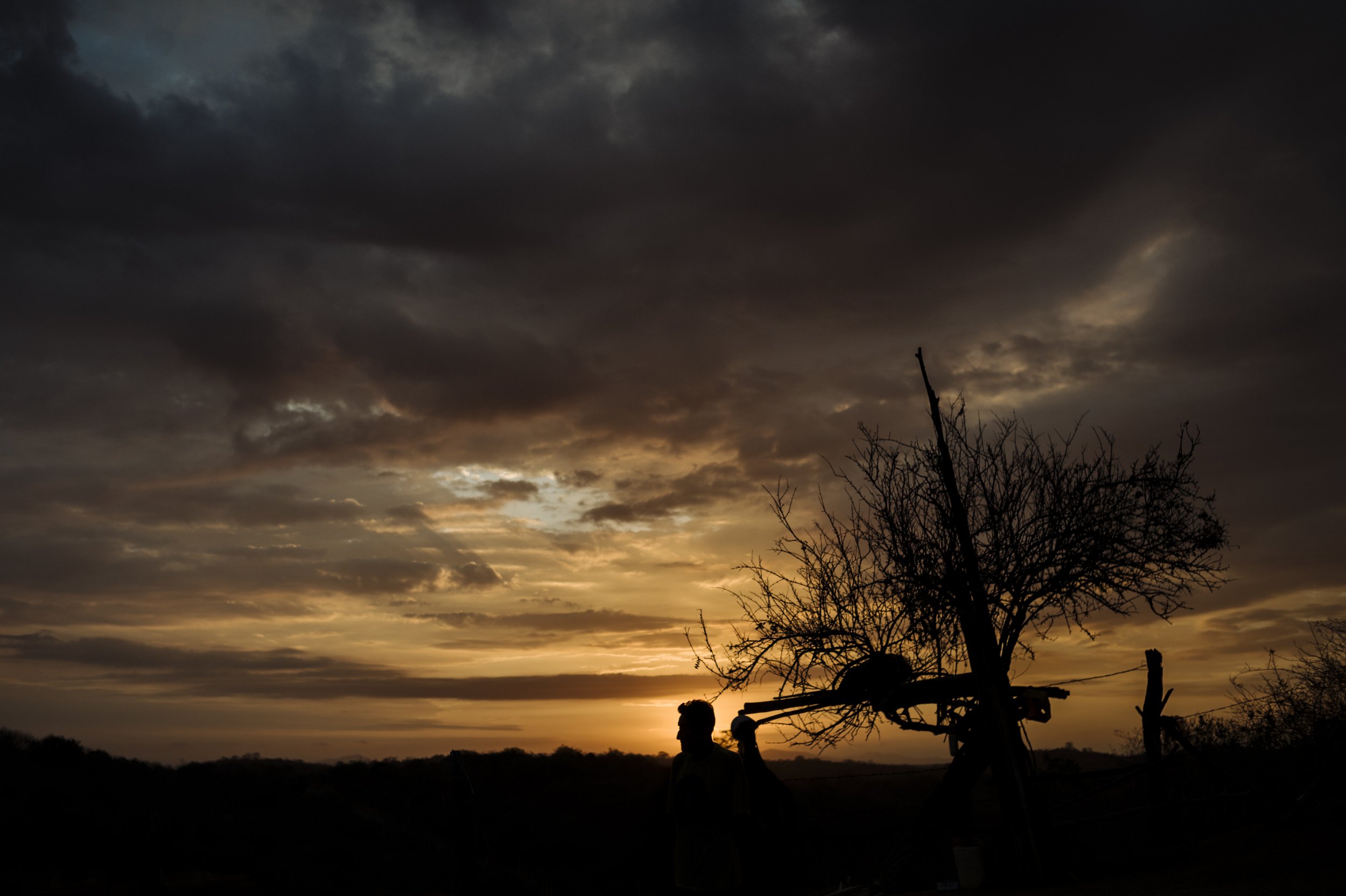
A snake crosses the road that leads to La Cienega. The harsh roads make it difficult for its inhabitants to reach the nearest towns during the rainy months.

Ignacia Quimi watches the first rain of the year from her house. She wears all black since her brother, Claudio, died a few weeks before this picture was taking, leaving the town with 11 inhabitants at that time.



Ignacia Quimi waits in her house while lights are being set up for the party during the day of the dead celebration.




Geronimo Avelino (center) enjoys some beers with his fellow neighbors during the day of the dead.




Clementina Billon carries water in a bucket to irrigate her small watermellon crop.



Maria Mateo searches for water at a table in her room. She was blind, deaf and mute when this photo was taken. She died in 2015 at 98 years old.







An injured goat finds refuge in the abandoned school of La Cienega. After the last teacher due to too few students, the last migration wave started, leaving the town with only elders.








La Ciénega
The Ciénega, once a thriving commune with 400 inhabitants engaged in livestock, agriculture, hunting, and coal production, faced a drastic decline in the late seventies due to a harsh drought. This led most residents to migrate to urban areas, leaving behind a village dependent solely on coal production. Depletion of trees used for this purpose resulted in the closure of the church and school, leaving the town without children.
Currently, only a dozen residents, all over 65, remain. In 2011, I began documenting their lives, highlighting the broader issue of rural resource depletion and uncontrolled urban growth. Despite the Day of the Dead celebration bringing temporary vibrancy, the community's future is uncertain, prompting the project's objective to preserve their customs and traditions, reflecting on current life to conserve their identity and history.